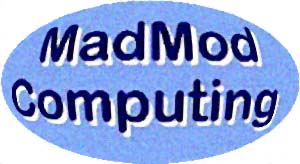
|
The MadMod Computing Newsletter Vol. 2004a |

|
The MadMod Computing Newsletter Vol. 2004a |
|
Welcome to this edition of The MadMod Computing Newsletter. We hope that you enjoy the features of each issue and learn some computing skills along the way. First, a reminder to make backups of your important files, and to use Scandisk and Disk Defragmenter--at least monthly. Second, keep your anti-virus software up-to-date. Last, obtain all the critical Windows updates. |
|
Featured in This Issue |
|
1. URL Spoofing 2. Uninstalling a Program 3. WebMD (website) |
|
1. URL Spoofing Serious security holes in Internet Explorer allow for malicious programming called a spoof to display a webpage but with the wrong web address (its Universal Resource Locator or URL). Particularly with sites that require your personal or financial information, this exploit can affect you personally with the possibility of theft of your identity. This exploit has been patched by the Microsoft Corporation's critical Windows update #Q832894; so use Windows Updater and download/install the patch. In the meantime, copy the following text string (CTRL + C) and then paste it (CTRL + V) into the address box of your browser to verify that the actual server address is correct: javascript:alert("The actual URL is:\t\t" + location.protocol + "//" + location.hostname + "/" + "\nThe address URL is:\t\t" + location.href + "\n" + "\nIf the server names do not match, this may be a spoof.")
An alert box will appear to give you the information about the address of the webpage you've just visited. I also recommend that you find a bookmark (favorite) that you no longer need, then edit the bookmark to have its URL the text string posted above, and in the bookmark name of "URL check". This will make it easier to use the JavaScript alert when you need it.
|
|
2. Uninstalling a Program Data files can be thought of as the children of the programs that use them. These files can be deleted though shortcut pointers to them will now fail to work-- a minor annoyance. However, programs can be thought of as the children of the Windows Registry. For a program to be properly deleted (uninstalled), the Registry has to have its information about the program changed so its pointers to the program are deleted. Use Start | Settings | Control Panel, then select Add/Remove Programs. Go down the list in the box until you find the program you wish to uninstall, select it and then click on Remove. If all goes well, the program will be uninstalled (deleted). If the program isn't listed in the box, Windows can't find the program to uninstall it. Even if it does, Windows depends upon an uninstall routine that comes with the program. If the uninstall routine is missing or doesn't work properly, you'll need a program that can be purchased at an office store that doesn't depend upon Windows to tell it the information it needs to do the uninstall. Reliable companies that charge for their software programs have accurate uninstaller routines. Uninstalling "free" programs downloaded and installed from the Internet can sometimes really be a pain: there's no uninstaller routine, the program doesn't work properly anyway, the program messes up other parts of the Registry making other programs or Windows not work--and it may install malicious software you're not aware of such as adware/spyware programs. I hope you catch my drift--free software from the Internet is very risky to use since "free" usually means the giver is getting something. Downloaded "free" music usually has a cost and you're going to pay in terms of the trouble it causes.
It's good advice to improve your computer's performance and free up some disk space by uninstalling your unneeded programs. Go luck!
|
|
3. WebMD (website) WebMD at www.webmd.com is an excellent medical resource whenever you have a need for information. While not a replacement for a necessary doctor visit, the website does a great job of explaining diseases, treatments, medicines and procedures used in surgery. Some of it is a bit graphic, but at least the information can help to inform and explain, thus reducing unnecessary worrying about a condition or treatment.
Do a search of your prescriptions to find out why and how you should be taking them--particularly if your prescriptions have changed or you're now using a generic version of your prescription.
|